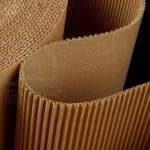 The corrugated segment of the packaging industry is growing rapidly. Demand for corrugated packaging material is expected to increase by an average of more than 4% annually over the next five years, and will amount to almost 115 million tonnes of converted material worth an estimated $176 billion by 2019.
The corrugated segment of the packaging industry is growing rapidly. Demand for corrugated packaging material is expected to increase by an average of more than 4% annually over the next five years, and will amount to almost 115 million tonnes of converted material worth an estimated $176 billion by 2019. There are a number of issues driving the growing demand for corrugated packaging materials. In this new and exclusive bulletin, Smithers Pira examines the top four trends in the corrugated packaging sector.
Environmental Issues
The development of innovative designs and reductions in paper grammages are being driven by increasingly demanding environmental and sustainability requirements. Producers are making significant investments in environmental protection and energy optimisation programmes, such as the high pressure boilers installed by Andritz at the Mondi Swiece, Ruzomberok and Frantschah plants, in addition to other activities aimed at reducing water consumption and improving logistics and transportation.Contrary to public perception, it is probably true to say that most environmental and sustainability investments and initiatives are driven by the need to improve efficiencies and reduce costs, with the resulting good PR simply being a positive spin-off for the marketing team.
Lightweighting vs. Heavyweighting
Average substance weights continue to show reductions as producers look to improve yields as far as possible. This is driven by the need to reduce overall packaging weight and reduce transport costs. Much of the new capacity being brought into the market is focused on lightweight containerboards of 70-160 gsm, especially in the new Chinese machines.The majority of lightweight boards are being used in Western Europe, where finished board weights have been reduced by an average of 5gsm from 2009 to 2012, according to data from FEFCO. An increase in demand for heavyweight boards has seen the average for Eastern Europe increase by 3gsm over the same period.
On the other hand, the industry has seen the introduction of certain new heavyweight products, such as Billerud Flute semi-chemical fluting. Primarily targeted at replacing wooden packaging, this product is also able to replace double-walled board with an overall lighter weight single wall substitute. The use of a suitably strong corrugated product as a substitute for wooden packs brings about significant weight reduction which improves logistics and handling, as well as providing a cushioning for sensitive heavy products, creating a more printable outer surface, and circumventing the regulations regarding pest and insect damage in wooden packs.
The heavy duty sector is continuing to show growth, particularly in the chemical and automotive industries, as a result of growing demand as well as the 'greener' image of corrugated compared with other materials. As a result of this distinction between light and heavyweighting, these expressions are now being replaced with the expression 'rightweighting'.


